Similar Triangles
Angle-Angle Similarity
Thales, an ancient Greek mathematician, devised a clever method to measure the height of the Great Pyramid of Cheops. One sunny day, he observed that the pyramid cast a shadow 210 meters long. At the same time, a 2-meter-tall broom handle, standing upright, cast a shadow 3 meters long. By comparing these shadows, can you determine the height of the pyramid?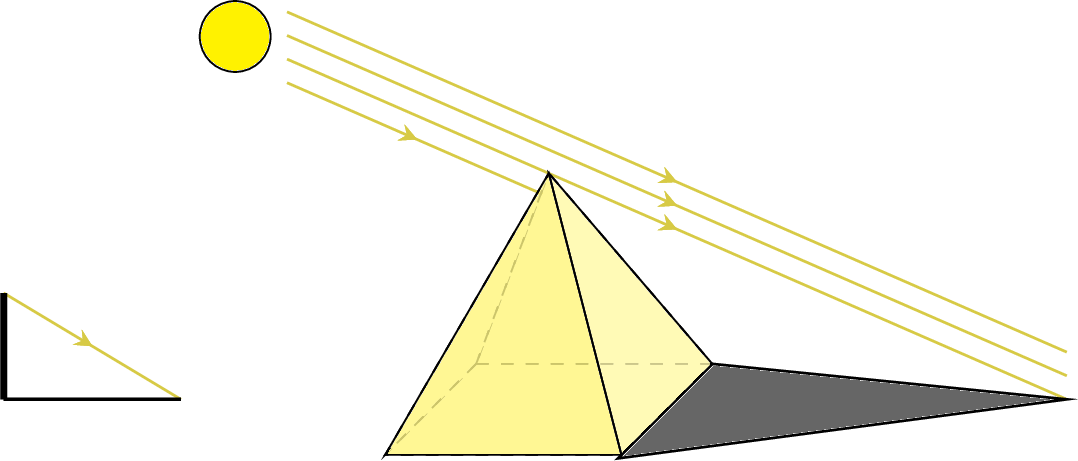

The triangles formed by the broom handle and its shadow (\(T_1: \triangle ABC\)) and the pyramid and its shadow (\(T_2: \triangle A'B'C'\)) are similar.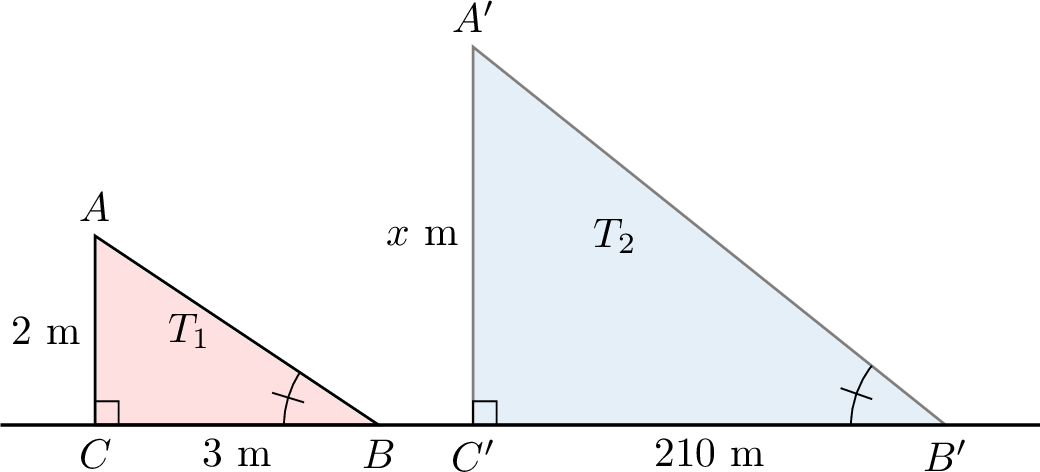

Proposition Angle-Angle Similarity
If two angles of one triangle are equal to two angles of another triangle, then the two triangles are similar.
Thales’s Theorem
Theorem Thales’s Theorem
Let \(\triangle ABC\) be a triangle, with a point \(\textcolor{colorprop}{D}\) on the line \(\Line{A\textcolor{colordef}{B}}\) and a point \(\textcolor{colorprop}{E}\) on the line \(\Line{A\textcolor{colordef}{C}}\).
If the line \(\textcolor{colorprop}{\Line{DE}}\) is parallel to the line \(\textcolor{colordef}{\Line{BC}}\), then the triangles \(\textcolor{colordef}{\triangle ABC}\) and \(\textcolor{colorprop}{\triangle ADE}\) are similar:$$\dfrac{A\textcolor{colorprop}{D}}{A\textcolor{colordef}{B}} = \dfrac{A\textcolor{colorprop}{E}}{A\textcolor{colordef}{C}} = \dfrac{\textcolor{colorprop}{DE}}{\textcolor{colordef}{BC}}$$Thales’s Configurations: Key Figures
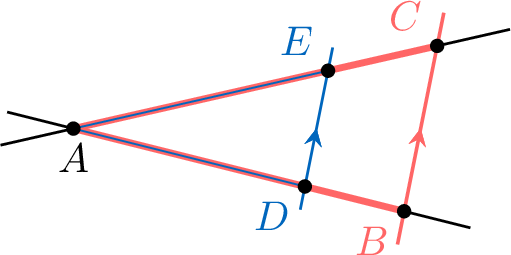
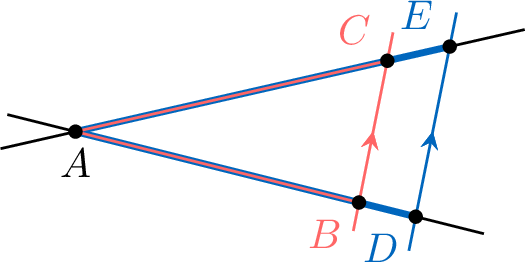
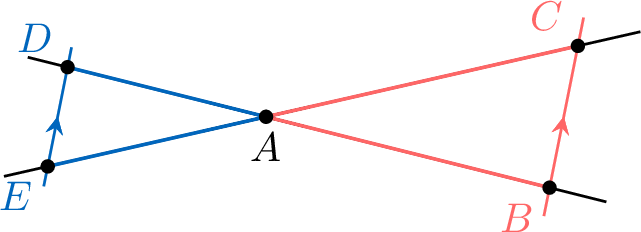
Each red triangle is similar to the blue triangle.
If the line \(\textcolor{colorprop}{\Line{DE}}\) is parallel to the line \(\textcolor{colordef}{\Line{BC}}\), then the triangles \(\textcolor{colordef}{\triangle ABC}\) and \(\textcolor{colorprop}{\triangle ADE}\) are similar:$$\dfrac{A\textcolor{colorprop}{D}}{A\textcolor{colordef}{B}} = \dfrac{A\textcolor{colorprop}{E}}{A\textcolor{colordef}{C}} = \dfrac{\textcolor{colorprop}{DE}}{\textcolor{colordef}{BC}}$$



Each red triangle is similar to the blue triangle.
Since the line \(\textcolor{colorprop}{\Line{DE}}\) is parallel to the line \(\textcolor{colordef}{\Line{BC}}\), the angles \(\angle \textcolor{colorprop}{ADE}\) and \(\angle \textcolor{colordef}{ABC}\) are corresponding angles and therefore equal. Additionally, \(\angle \textcolor{colorprop}{DAE}\) and \(\angle \textcolor{colordef}{BAC}\) are the same angle at vertex \(A\). Thus, by the Angle-Angle (AA) similarity criterion, triangles \(\textcolor{colordef}{\triangle ABC}\) and \(\textcolor{colorprop}{\triangle ADE}\) are similar. Therefore, the ratios of their corresponding sides are equal:$$\dfrac{A\textcolor{colorprop}{D}}{A\textcolor{colordef}{B}} = \dfrac{A\textcolor{colorprop}{E}}{A\textcolor{colordef}{C}} = \dfrac{\textcolor{colorprop}{DE}}{\textcolor{colordef}{BC}}$$